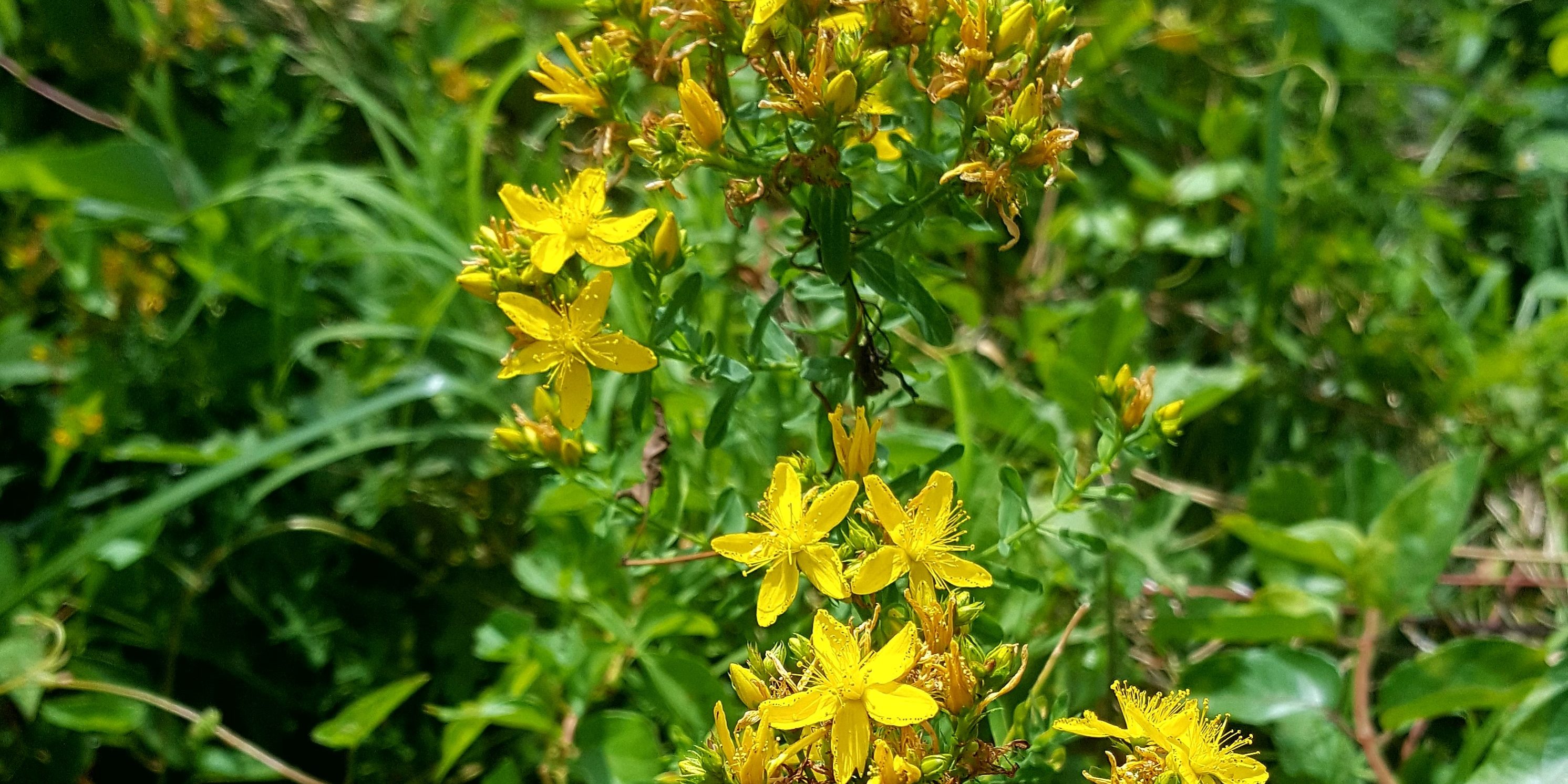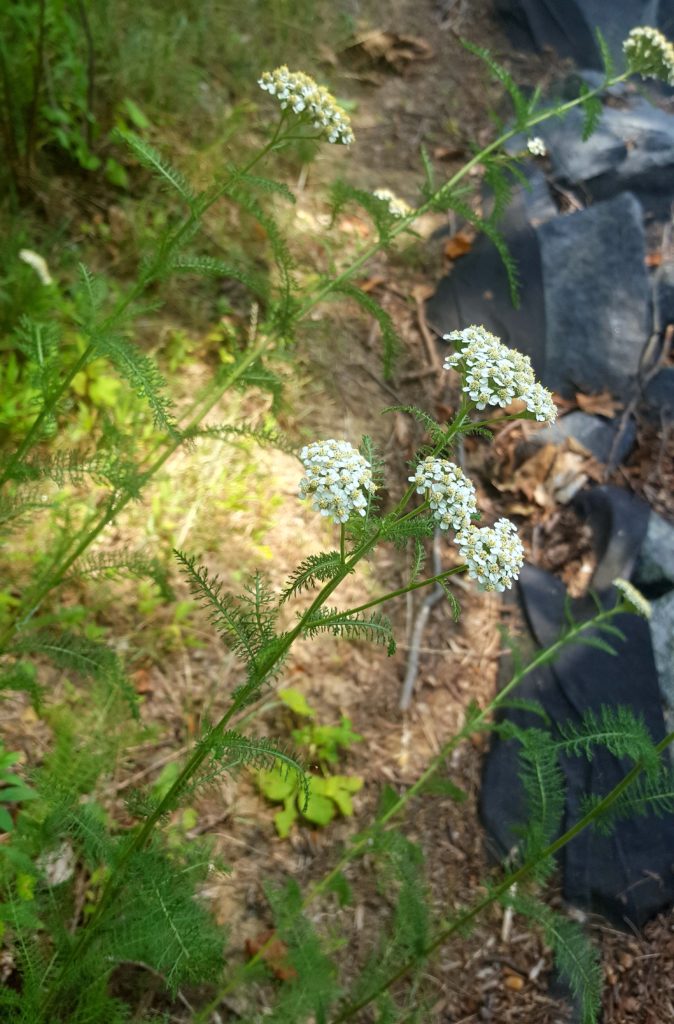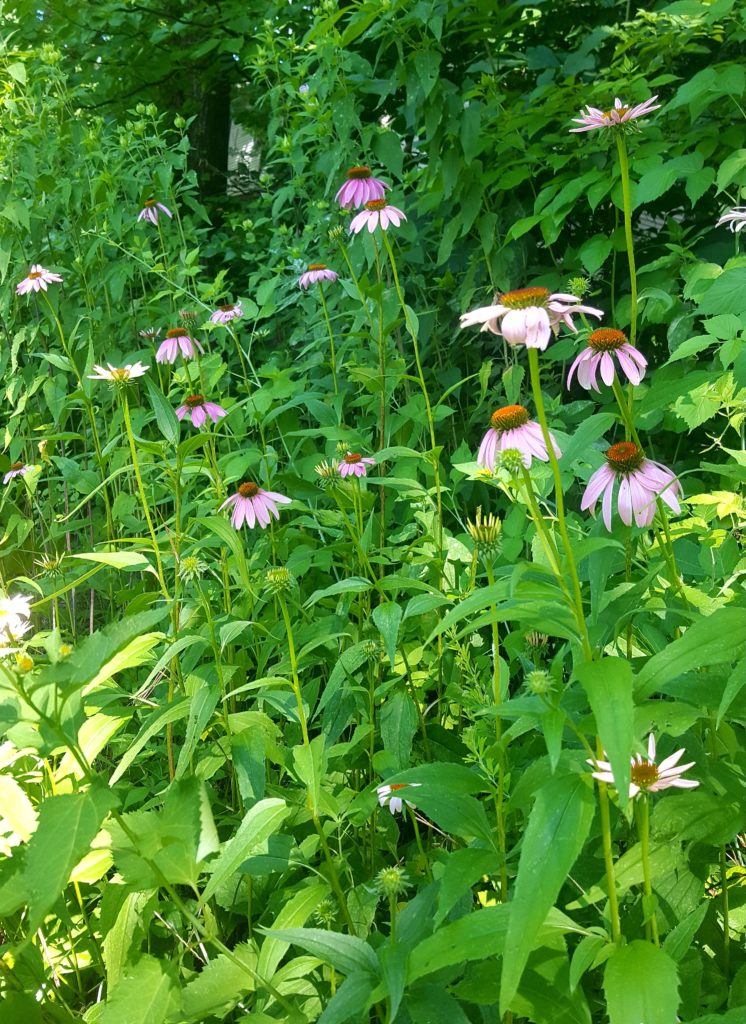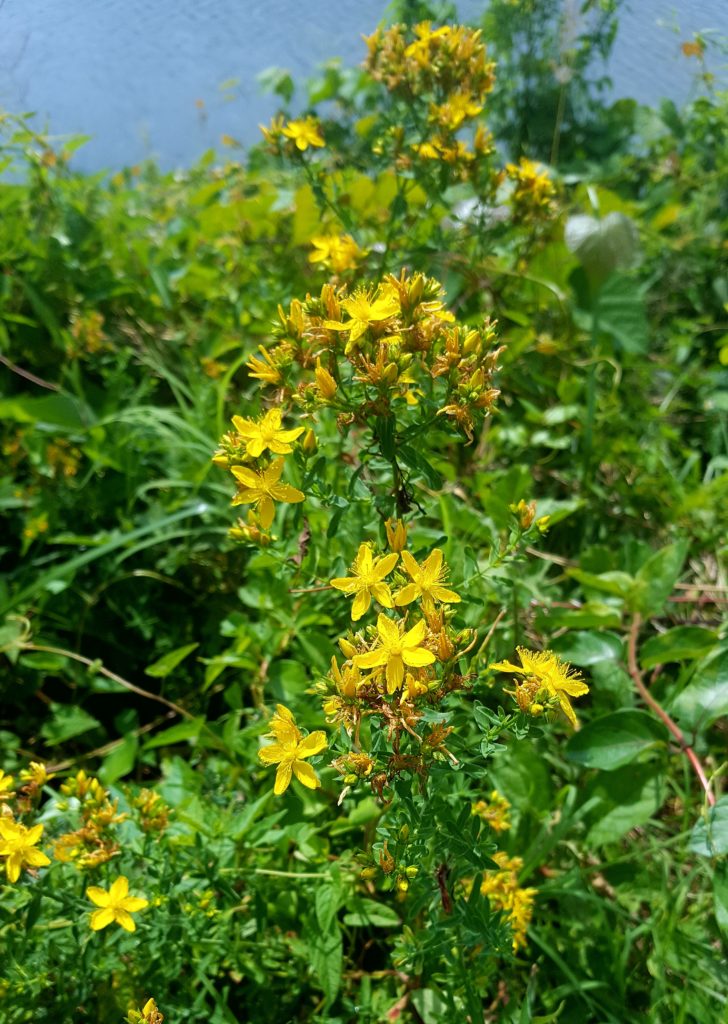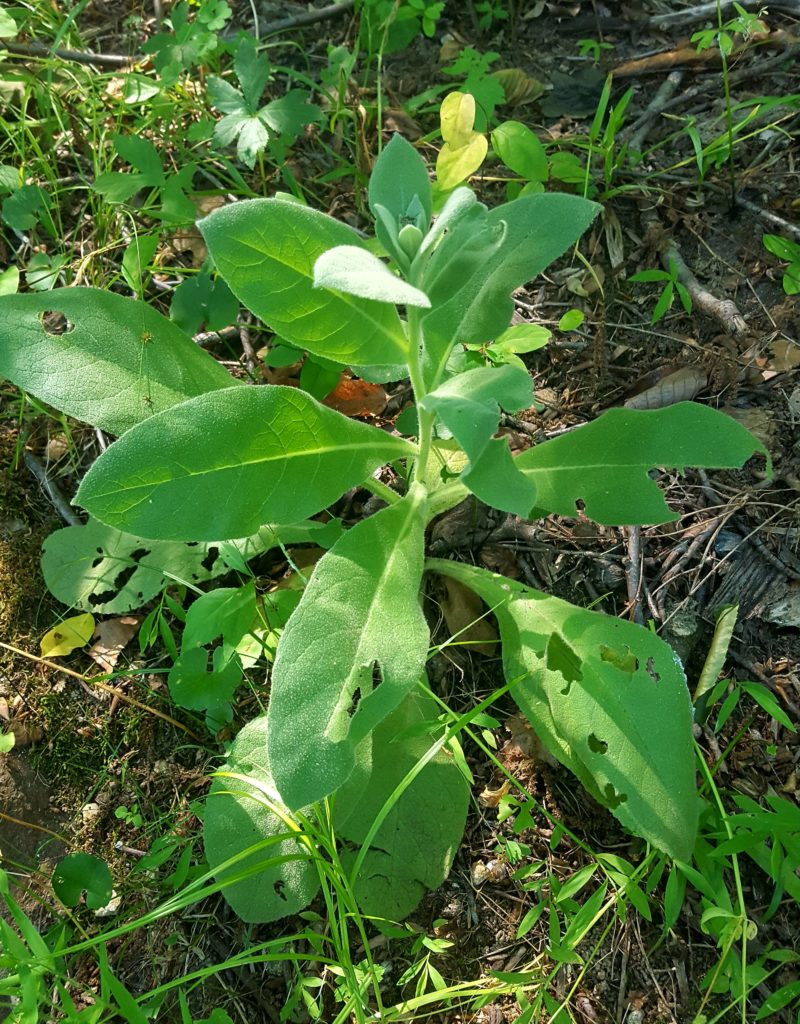There’s nothing quite like coming upon medicinal herbs “in the wild”. It’s an exciting reminder that medicine grows wherever it can, and once you know an herb, finding it is like meeting an old friend. I recently took a walk around a lake in a residential area north of College Park, and was rather stunned at the variety of medicinal herbs growing in the area. Here are some of the friends I found!
Yarrow
Achillea millefolium
Yarrow is often found growing gamely in the dry, packed soil of fields and roadsides. But if you grow your own, you can really encourage it to spread and thrive with rich, well-drained soil and plenty of water. Yarrow stops bleeding if applied to a wound or nosebleed, and it does the same when taken internally. It is included in our Blood Pressure Tea for its ability to dilate the peripheral blood vessels and lower blood pressure. It tightens up weakened tissue, tones the circulatory system, helps the body expel excess mucous and phlegm, and is is one of the best diaphoretic herbs for breaking a fever.
Echinacea
Echinacea purpurea
No herb walk would be complete without a sighting of our wonderful native Echinacea. Amazingly, this patch was found growing interspersed with Black Cohosh and Bee Balm, right across the path from the Yarrow stand. Echinacea is best known for its anti-microbial and immune boosting actions. It can be used both internally and externally to boost immune function and fight off infection. Echinacea is cleansing to the lymphatic system. For infections, it should be taken frequently, tapering off as symptoms improve. At Smile, we have discovered that goldfinches love to feed on the thistle-like seed heads, and if you come by the shop you might see little gold birds in the Echinacea bed out front.
St. John’s Wort
Hypericum perforatum
Sunny St. John’s Wort can be found growing in large quantities around this particular lake, and I think even the sight of it can lift the spirits. This photo was taken in early July during the heavy blooming period. You may have heard of this herb as an effective aid for mild depression and Seasonal Affective Disorder. St. John’s Wort also increases photosensitivity, so it’s good to take care of sunburns when taking it internally. St. John’s Wort really shines as an antidote for nerve pain and topical wounds of all kinds. In massage oils and salves, it can provide wonderful relief for sciatica, neuralgia, muscle tension, burns, wounds, and headaches.
Mullein
Verbascum thapsus
This baby Mullein was discovered on the edge of the forest in its first year of growth. Mature 2-year old Mullein plants can grow well over 6 feet, sending up tall spires of brilliant yellow flowers that may be infused in oil to make a remedy for earaches, infections, and skin irritations. A tea of Mullein leaves reduces inflammation in the respiratory system. The plant can often be found growing thickly along roadsides and highways where air pollution is a problem. Mullein encourages expectoration and moisturizes the respiratory mucous membranes, helping us to breathe easier, and it is an excellent ally for recovering from coughs and respiratory infections.

